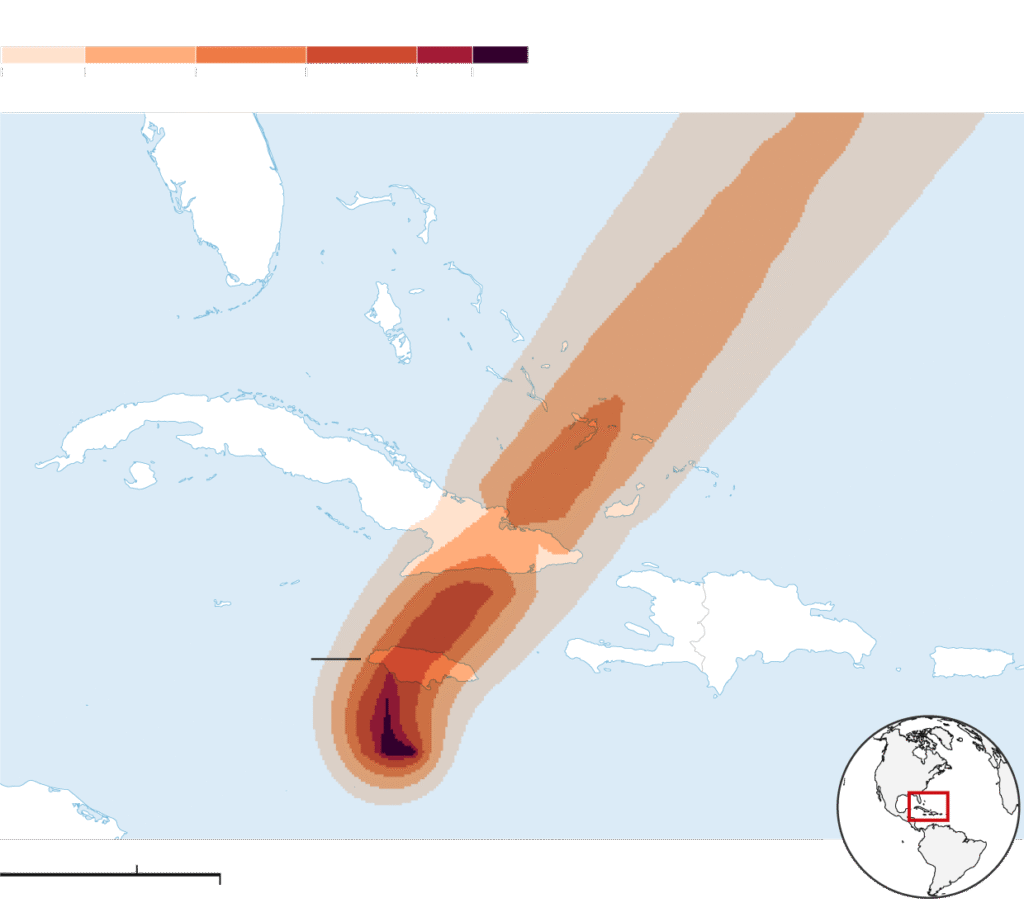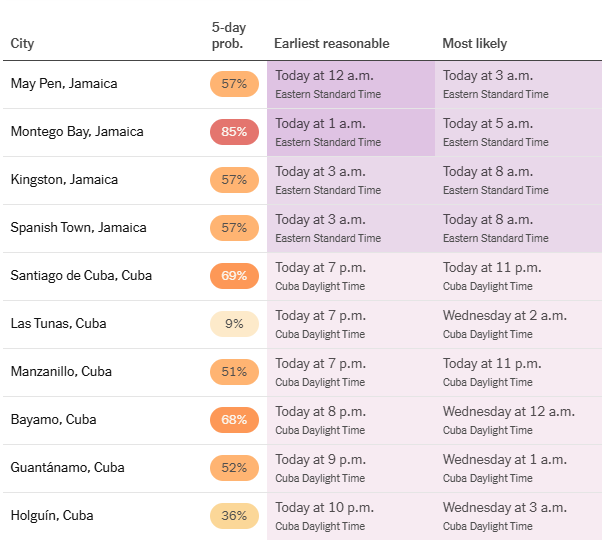Hurricane Melissa, a ferocious Category 5 storm packing 175 MPH winds, battered Jamaica with catastrophic rains and widespread destruction. Authorities declared a national emergency as floods, power outages, and landslides paralyzed the island. Experts call it one of the most powerful Atlantic hurricanes in modern records, fueled by record-warm ocean waters.
Table of Contents

Hurricane Melissa Slams Jamaica With 175 MPH Winds and Catastrophic Rains
Kingston, Jamaica — October 28, 2025
Hurricane Melissa has unleashed catastrophic devastation across Jamaica, striking the island as a Category 5 storm with sustained winds of 175 miles per hour and torrential rains that have triggered severe flooding, landslides, and widespread destruction.
Meteorologists describe Melissa as one of the strongest hurricanes ever recorded in the Caribbean. The storm intensified rapidly over the warm waters of the western Atlantic before slamming into Jamaica’s southern coast late Monday night, lashing the island with relentless rain bands and hurricane-force gusts that tore through cities and rural communities alike. — National Hurricane Center
National Emergency Declared
Jamaica’s Prime Minister Andrew Holness declared a national emergency and urged residents to remain indoors as emergency crews struggled to reach affected areas. “This is an unprecedented event,” Holness said in a televised address. “The government is deploying every available resource to ensure rescue and relief operations are underway, but conditions remain extremely dangerous.”
The country’s Office of Disaster Preparedness and Emergency Management (ODPEM) reported that more than 200,000 homes lost power overnight, and communication networks in several parishes were cut off due to fallen transmission lines and flooded substations. Major highways, including the A1 coastal route, were submerged or blocked by debris.
Rainfall and Flooding Crisis
According to the National Meteorological Service of Jamaica, Melissa has dumped between 20 to 35 inches (500–900 mm) of rain in less than 24 hours, with some mountainous regions recording even higher totals. Emergency alerts warned of “life-threatening flash floods and mudslides” across the parishes of St. Andrew, Portland, and St. Thomas.
Videos circulating on social media showed cars floating down flooded streets in Kingston, while residents in rural communities used boats and makeshift rafts to escape rising waters. The Rio Cobre and Black River overflowed their banks, inundating nearby farmlands and homes.
Airports and Ports Closed
All international and domestic flights were grounded as Norman Manley International Airport in Kingston and Sangster International Airport in Montego Bay** suspended operations. The Port Authority of Jamaica confirmed that seaports remain closed until further notice due to high swells exceeding 25 feet.
Shipping containers and small fishing vessels were reported adrift in several coastal towns, and authorities warned that storm surges of up to 15 feet could inundate low-lying areas. — The Guardian
Humanitarian Efforts Underway
Rescue teams from the Jamaica Defence Force, Red Cross, and local community groups began coordinated evacuation and relief efforts at dawn, despite dangerous conditions. Shelters housing more than 50,000 people are operating at full capacity, while international aid agencies have pledged immediate support.
The United States, Canada, and United Nations have already mobilized disaster-response teams and emergency supplies, including water purification units, food packages, and portable generators.
When will damaging winds arrive?
Sustained winds are considered “damaging” when they reach 50 knots, or 58 m.p.h., and can start to break tree limbs and tear off roof shingles. More widespread damage occurs as winds reach and exceed hurricane force, which is 74 m.p.h.

Meteorologists Warn of Ongoing Threat
The U.S. National Hurricane Center (NHC) warned that Hurricane Melissa is expected to maintain Category 4 to 5 intensity as it tracks northwest toward Cuba and the Cayman Islands over the next 24 hours. Meteorologist Dr. Elena Ramirez described the storm as “extremely dangerous” due to its slow forward speed, meaning Jamaica could face prolonged exposure to hurricane-force winds and rain.
“This kind of storm can cause long-lasting humanitarian and economic crises,” Ramirez said. “It’s a textbook case of how warmer oceans and climate change are amplifying tropical cyclone intensity.”
Climate Connection and Global Concern
Climate experts link Melissa’s explosive growth to record sea surface temperatures in the Caribbean, which exceeded 31 °C (88 °F) — among the highest ever observed in October. “We are witnessing climate-driven super-storms becoming the new normal,” said Dr. Michael Andrews, a climate scientist at the University of the West Indies.
Jamaica’s tourism industry, a major economic pillar, faces severe disruption as resorts along the north and south coasts report structural damage, flooded properties, and supply shortages. Preliminary estimates suggest economic losses could surpass $5 billion USD once full assessments are completed.
What Happens Next
Authorities urge citizens to remain sheltered and avoid flooded areas until emergency services declare them safe. Cleanup and restoration efforts are expected to take weeks, if not months. The National Water Commission and Jamaica Public Service are prioritizing hospitals, shelters, and emergency hubs for service restoration.
As Melissa continues to churn toward the Cayman Islands, the Caribbean braces for further impacts — a grim reminder of how fragile island nations remain in the face of an intensifying climate crisis.